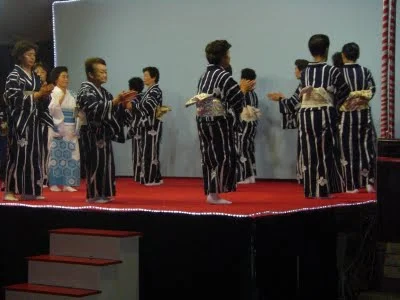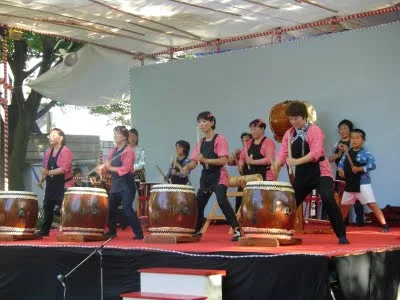Japanese students also have shown their dance skills for the second day of the festival. The food stalls were crowded. Kimono dress stall also attracted many people.
During one of my trip back to India, I could meet Ms Nakamura from Tokyo, who teachers Indian dance to Indian and Japanese students. She is a well known dance performer in Kummi dance, which is a dance form being performed in Tamilnadu, one of the south Indian states. It was a new experience to hear from a Japanese about classical dances of India.
At the end of the stage performances, the Japanese classical dance was performed. The old woman performer showed her skills at the stage and dancers came down to the ground to join with the public. The public also joined with the dancers and they made a circle, moving slowly with a dance steps around a tree. It was a perfect example of cultural fusion point. People from different nationalities, most of them from India, joined in the traditional Japanese dance.

It was 9 O’ clock in the night and still the music was in the air compelling people to dance with the steps shown by the elder performer at the stage. People were not tired even after making several round around the tree with dancing steps. Departing seemed painful for many people.
The next day, while going to office I could see some people still sitting around the stage and park as if they did not like to go back. This is the gloomy part of any festival. The festival and celebrations will be over, but still people carry the memories with them.
The good moments they shared in the social gathering and celebration linger in the mind. That is one of the purposes of festivals. The sweet memories tempt people to organize and join for festival in the coming years too. This is what we also do, waiting for the next year’s festival. Such small hopes are the bigger motivations for life – essential drivers of social life.










No comments:
Post a Comment
Thanks for your comment!